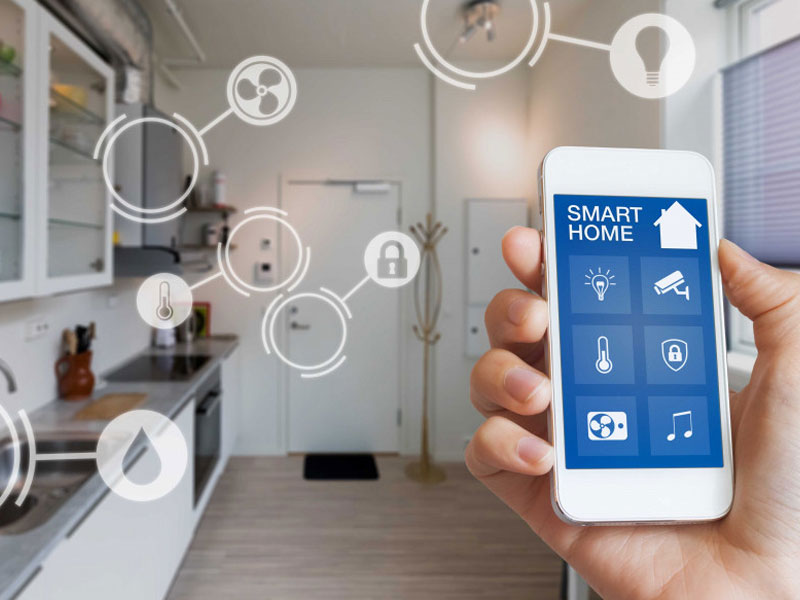Tech Mahindra launches a sports cloud platform built on AWS to provide an immersive fan experience globally
SOURCE: HTTPS://WWW.MAHINDRA.COM/
NOV 27, 2023
Telecom Authority releases draft regulation related to internet of things https://tkpo.st/3lSbgzt
SOURCE: KATHMANDUPOST.COM
DEC 08, 2021

The rules will legalise the system where objects are connected to the internet allowing them to communicate with one another without human intervention.
The Nepal Telecommunications Authority has prepared a draft of the Internet of Things (IoT) and Machine-to-Machine Communications (M2M) Regulation Framework 2021 to legalise the system where physical objects are connected to the internet allowing them to communicate with one another without human intervention.
As per the International Telecommunication Union (ITU), the internet of things is a global infrastructure for the information society enabling advanced services by interconnecting (physical and virtual) things based on existing and evolving, interoperable information and communication technologies.
The devices connected to the internet of things range from ordinary household objects to sophisticated industrial tools.
Machine-to-machine communications is the exchange of data between a remote machine and a back-end information and technology infrastructure.
Ambar Sthapit, director of the authority, said that a wide range of internet of things and mobile-to-mobile communications are emerging and increasing, and it has become important to introduce such a system in Nepal too.
The internet of things is used for autonomous vehicles, smart meetings and remote sensors that monitor and control office or home equipment, including things required for smart cities.
“If any firm wishes to provide internet of things and mobile-to-mobile communications services by developing a network, the authority will provide licences to them,” he said.
The draft has categorised internet of things and machine-to-machine communications services based on network size and coverage into indoor and outdoor internet of things and mobile-to-mobile service.
The indoor internet of things and mobile-to-mobile service category includes applications and services that use wired and wireless networks created only inside a building. These IoT and M2M devices cannot be connected to the internet or the corporate intranet.
The outdoor category includes internet of things and mobile-to-mobile communications applications and services that use intra and internet connections.
Min Prasad Aryal, director of the authority, said that there are devices and equipment that can be remotely controlled through the use of the internet. It can be used in different sectors like education, health, agriculture, infrastructure, industry, he said.
“A person can switch on or off their electrical equipment like lights, air conditioner or refrigerator at home from another place through their mobile applications. This is the internet of things,” he said. Such devices and equipment are enabled with the system that can be remotely controlled.
As per the draft, the authority will provide authorisation to provide outdoor internet of things and mobile-to-mobile communications services to authorised telecom service providers, network service providers, internet service providers, authorised IoT and M2M service providers or any firm willing to provide the services.
The authorised internet of things and mobile-to-mobile communications service providers shall provide services by using the network provided by telecom service providers, network service providers and internet service providers as traditional value-added service providers.
The authority can prepare and suitably amend the authorisation conditions as per need, the draft said.
According to the draft, the cellular internet of things will be provided only by the mobile service licensee and basic telecommunications service licensee.
The non-cellular internet of things and mobile-to-mobile communications, licence exempted bands for IoT, ultra-wideband (UWB), short-range device (SRD) bands and industrial, scientific and medical (ISM) bands as specified by the authority will be used under given conditions for non-cellular IoT and M2M applications.
The authority posted the draft regulation on its official website on December 2, and has invited the public to submit views, suggestions and comments on it within a month.
For the internet of things and mobile-to-mobile device identification, number ranging will be used in the National Numbering Plan following the ITU-T E.164 and 164.1 standard. However, depending on the growth of IoT and M2M services, the requirement can be reviewed by the authority.
ITU-T E.164 describes the international public telecommunication numbering plan.
The internet of things should comply with all laws, regulations and requirements issued by the Nepal Telecommunications Authority concerning data management, including security, privacy and protection.
As per the draft, the internet of things and mobile-to-mobile communications service provider will not install or connect, or permit the installation or connection of, any terminal equipment unless the terminal equipment is type approved by the authority, or otherwise permitted by the authority.
All the equipment used to provide internet of things and mobile-to-mobile communications services will be required to comply with type approval regulations and standardisation requirements as set by the authority from time to time.
LATEST NEWS
Augmented Reality
Hi-tech smart glasses connecting rural and remote aged care residents to clinicians
NOV 20, 2023
WHAT'S TRENDING


Data Science
5 Imaginative Data Science Projects That Can Make Your Portfolio Stand Out
OCT 05, 2022

SOURCE: HTTPS://WWW.MAHINDRA.COM/
NOV 27, 2023
SOURCE: HTTPS://WWW.IOTTECHNEWS.COM/
OCT 27, 2023
SOURCE: HTTPS://WWW.THEDAILYSTAR.NET/CAMPUS/
OCT 01, 2023
SOURCE: HTTPS://WWW.IOTFORALL.COM/
SEP 11, 2023
SOURCE: HTTPS://WWW.IOTTECHNEWS.COM/
AUG 10, 2023
SOURCE: HTTPS://WWW.SCIENCEDAILY.COM/
AUG 11, 2023